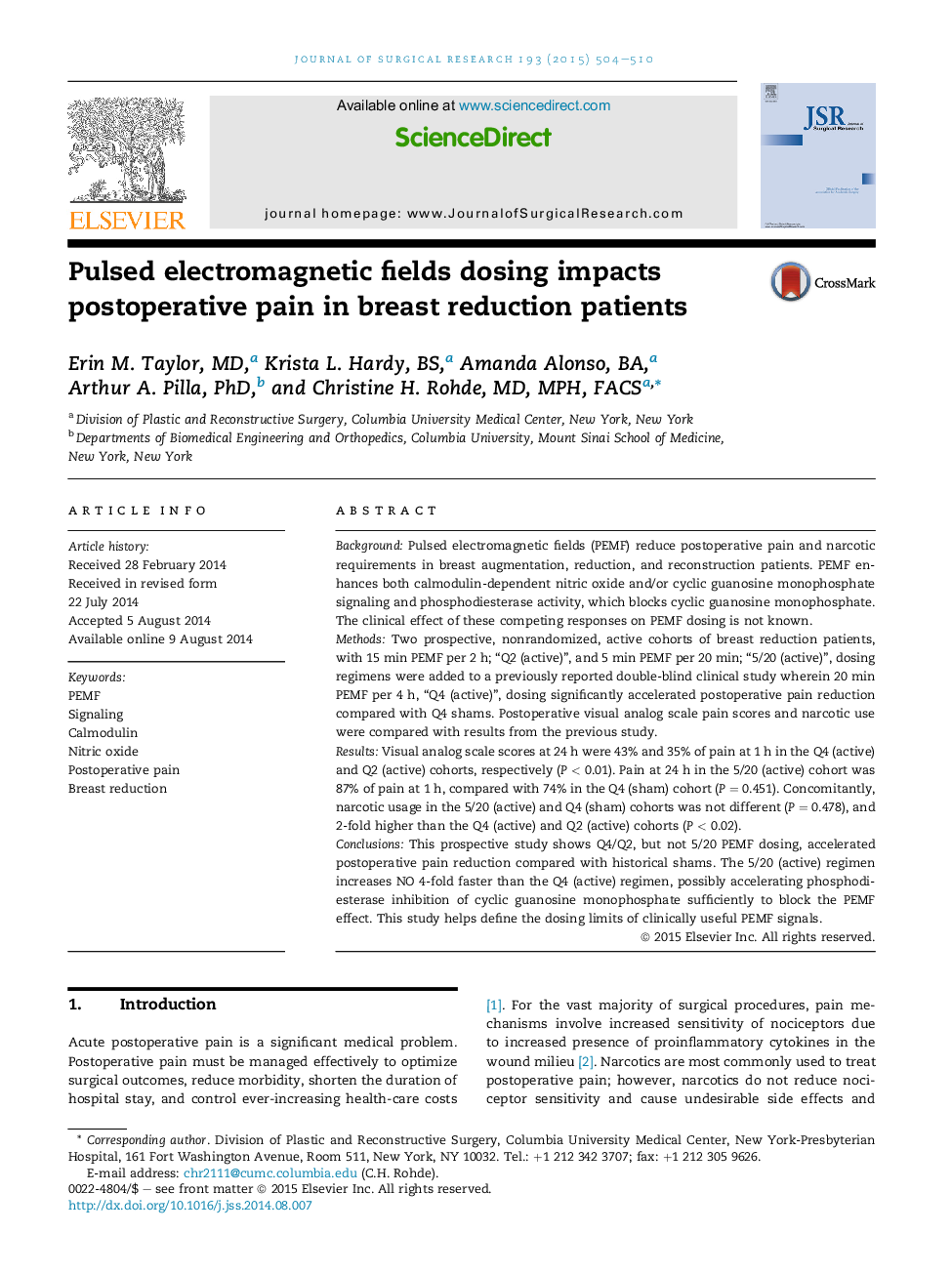| Article ID | Journal | Published Year | Pages | File Type |
|---|---|---|---|---|
| 6253812 | Journal of Surgical Research | 2015 | 7 Pages |
BackgroundPulsed electromagnetic fields (PEMF) reduce postoperative pain and narcotic requirements in breast augmentation, reduction, and reconstruction patients. PEMF enhances both calmodulin-dependent nitric oxide and/or cyclic guanosine monophosphate signaling and phosphodiesterase activity, which blocks cyclic guanosine monophosphate. The clinical effect of these competing responses on PEMF dosing is not known.MethodsTwo prospective, nonrandomized, active cohorts of breast reduction patients, with 15Â min PEMF per 2Â h; “Q2 (active)”, and 5Â min PEMF per 20Â min; “5/20 (active)”, dosing regimens were added to a previously reported double-blind clinical study wherein 20Â min PEMF per 4Â h, “Q4 (active)”, dosing significantly accelerated postoperative pain reduction compared with Q4 shams. Postoperative visual analog scale pain scores and narcotic use were compared with results from the previous study.ResultsVisual analog scale scores at 24Â h were 43% and 35% of pain at 1Â h in the Q4 (active) and Q2 (active) cohorts, respectively (PÂ <Â 0.01). Pain at 24Â h in the 5/20 (active) cohort was 87% of pain at 1Â h, compared with 74% in the Q4 (sham) cohort (PÂ =Â 0.451). Concomitantly, narcotic usage in the 5/20 (active) and Q4 (sham) cohorts was not different (PÂ =Â 0.478), and 2-fold higher than the Q4 (active) and Q2 (active) cohorts (PÂ <Â 0.02).ConclusionsThis prospective study shows Q4/Q2, but not 5/20 PEMF dosing, accelerated postoperative pain reduction compared with historical shams. The 5/20 (active) regimen increases NO 4-fold faster than the Q4 (active) regimen, possibly accelerating phosphodiesterase inhibition of cyclic guanosine monophosphate sufficiently to block the PEMF effect. This study helps define the dosing limits of clinically useful PEMF signals.
